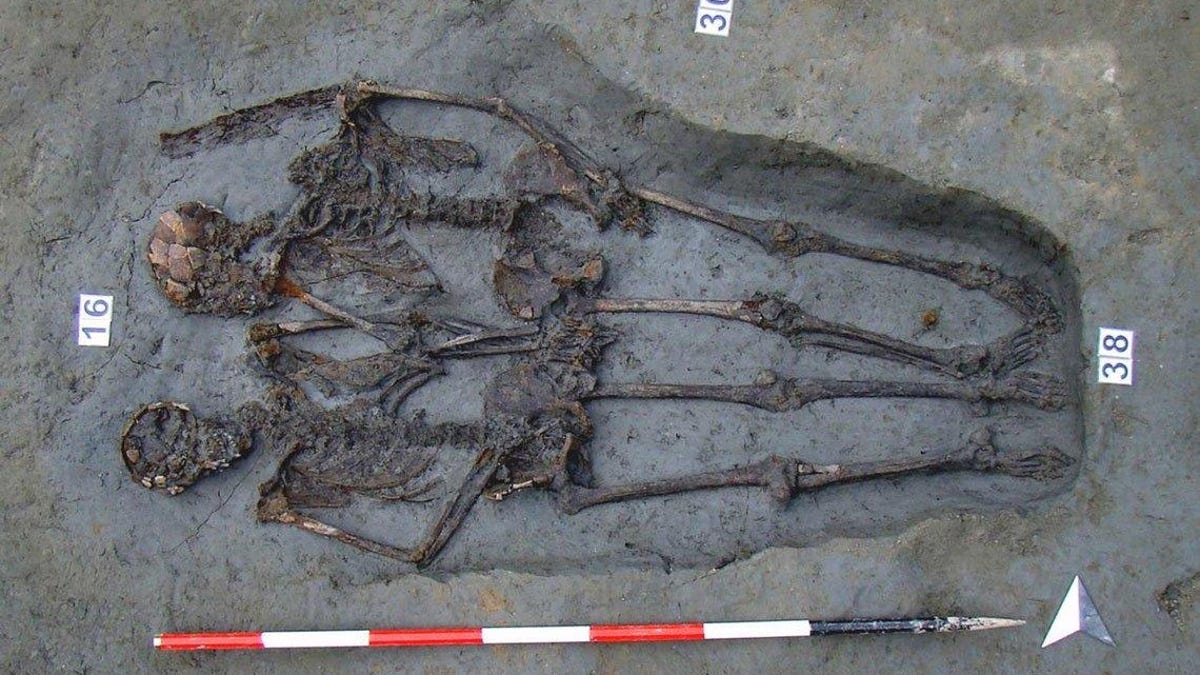Ancient 'Lovers of Modena' skeletons determined to be two men
Scientists studied the skeletons' teeth to learn more about the remains, which were found holding hands.
Around 1,600 years ago, two people were buried in Italy together, holding hands. When the skeletons were discovered in 2009, people couldn't resist imagining a back story for the mysterious couple, which became known in the media as the "Lovers of Modena."
The skeletons had degraded over time and at first scientists weren't able to identify if they were male or female. A research team led by the University of Bologna in Italy has now determined both skeletons were male. The team published a study on the skeletons this week in the journal Scientific Reports. "We were able to extract proteins from the dental enamel of both individuals (~1600 years old) and to confidently classify them as males," the paper says.
The researchers don't rule out the possibility of the men being lovers, though they suggest this explanation is unlikely due to the "social attitudes and Christian religious restrictions" of the time period.
We don't know the circumstances of their relationship or their burial together. They could have been friends, family members, soldiers or involved in a sexual relationship. The remains were found in what may have been a war cemetery. Other bodies in the same area showed signs of trauma related to violent death.
Archaeologists have unearthed examples of ancient male-female pairs that were buried holding hands. "The discovery of two adult males intentionally buried hand-in-hand may have profound implications for our understanding of funerary practices in Late Antique Italy," the study suggests.
The researchers described the gesture as likely representing "a voluntary expression of commitment between two individuals." Beyond that, we may have to embrace the mystery of who they were and what they meant to each other.


